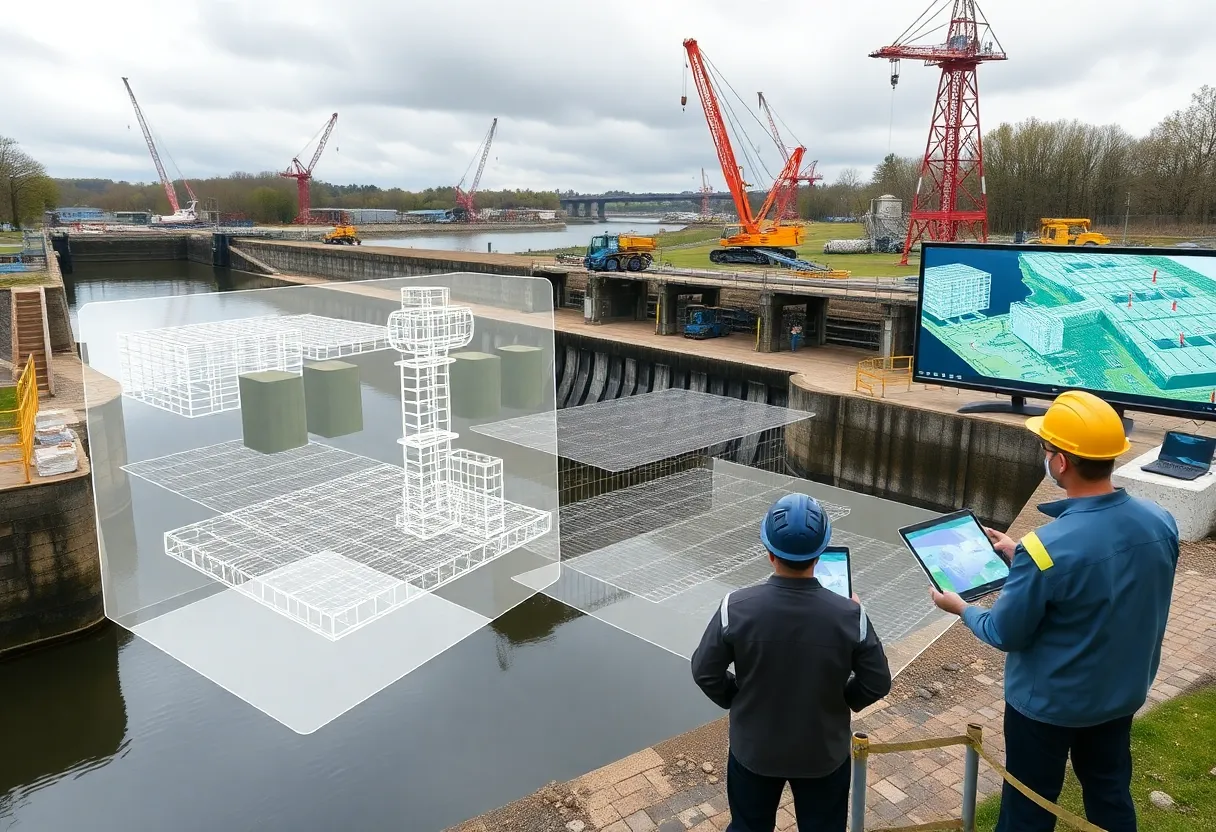Buffalo, New York, August 21, 2025
News Summary
The Buffalo District of the U.S. Army Corps of Engineers has begun using Building Information Modeling (BIM) to support planning, maintenance and asset management. Initial efforts target detailed models of the miter gates at Black Rock Lock in downtown Buffalo and remediation mapping for the Niagara Falls Store Site. Leaders expect BIM to improve repair design, construction monitoring, cost estimating and long‑term records while helping coordinate trades and visualize site constraints. The adoption aligns with federal digital modernization goals but faces common hurdles including file compatibility, data standards, database integration and staff training.
USACE Buffalo District adopts BIM for planning and maintenance
The Buffalo office of the U.S. Army Corps of Engineers has begun using Building Information Modeling (BIM) to guide planning, repairs and long-term upkeep of waterway and remediation projects. The move aims to capture detailed digital data that can be used across design, construction and asset management and is already being applied to modeling miter gates at the Black Rock Lock and to remediation work at a former store site near Niagara Falls.
What changed and why it matters
The district’s adoption of BIM follows a documented pilot at a separate federal site that highlighted clear benefits for planning, tracking work and maintaining assets over time. Local engineers say BIM helps collect and organize wide-ranging data so teams can better plan projects, design repairs or upgrades, track construction progress, and spot changes as infrastructure ages.
Early results and planned uses
Initial work focuses on two practical targets. First is a digital model of the miter gates at Black Rock Lock in downtown Buffalo, intended to support future repairs and ongoing maintenance planning. Second is a BIM-driven approach to remediation at the Niagara Falls Store Site, where detailed models will help coordinate cleanup, monitor construction activities and maintain records for future oversight.
Challenges the district faces
District staff report hurdles that often come with new digital tools, including making sure different file types work together and enforcing consistent data standards so models remain usable across teams and projects. The district describes BIM as an investment in future technology that requires upfront work to set common conventions and protocols.
Policy and funding context
The shift to BIM comes amid a broader federal push to modernize permitting and infrastructure delivery through technology and better data management. That push includes funding programs aimed at encouraging state and local agencies to adopt digital construction tools. A recent federal funding round, for example, distributed grants intended to help states implement advanced digital systems for construction management.
Industry trends that support the move
The construction sector has been adopting digital tools for years. Industry-wide data show that BIM is a widely used virtual design tool and that digital construction markets are growing. Studies have found that BIM can shorten project timelines and reduce costs. Other digital trends—artificial intelligence, virtual design and construction, drones, robots, and modular and 3D-printing methods—are all expanding and changing how projects are planned and executed. These trends help explain why public agencies are moving toward more digital project delivery methods.
Broader pressures on the industry
The construction industry faces persistent labor shortages and an aging workforce, which puts pressure on public and private owners to find smarter ways to deliver work with fewer hands. New tools that increase productivity, improve safety monitoring, or automate routine tasks are part of that response. Digital models that capture asset details help reduce rework and manage maintenance with smaller, better-informed teams.
What this means for future projects
As the Buffalo District scales BIM use, its work on locks and remediation sites will serve as practical examples of how digital models can improve planning and lifecycle management for civil infrastructure. The district is prioritizing standards and compatibility early to avoid data silos later. If successful, the effort could streamline repairs, speed decision-making and preserve institutional knowledge about complex assets.
Next steps
The district plans to continue building models for other assets and to refine internal workflows so teams can exchange and update data reliably. The work will include internal training, establishing data rules and testing file exchange between engineering, survey and construction groups.
FAQ
What is BIM?
BIM stands for Building Information Modeling. It creates a digital twin of a physical asset so teams can plan, design, build and maintain structures with shared, structured data.
Why is the Buffalo District using BIM now?
The district is adopting BIM as part of broader federal modernization efforts and to capture efficiencies in planning, maintenance and recordkeeping for complex infrastructure.
Which projects are being modeled first?
Initial models focus on the Black Rock Lock miter gates and remediation at the Niagara Falls Store Site, with other assets to follow.
What challenges should agencies expect?
Common challenges include making files compatible across software, setting and enforcing data standards, and training staff to use new digital workflows.
How does BIM help with maintenance?
BIM centralizes data about materials, geometry and condition history, making it easier to plan repairs, track construction progress, and monitor changes over time.
Is federal funding available for digital construction tools?
Yes. Recent federal grant programs have directed funds to help state and local agencies deploy advanced digital construction management systems.
Key features at a glance
| Feature | Details |
|---|---|
| Who | Buffalo District, U.S. Army Corps of Engineers |
| What | Adoption of Building Information Modeling for planning, maintenance and remediation |
| Initial projects | Black Rock Lock miter gates; Niagara Falls Store Site remediation |
| Primary benefits | Improved planning, better repair design, progress tracking, long-term asset management |
| Main challenges | File compatibility and enforcing consistent data standards |
| Policy context | Part of broader federal modernization and digital transformation efforts; available federal grants for digital construction systems |
| Related trends | Growth in AI, drones, robotics, modular building and 3D printing; rising use of virtual design tools |
Deeper Dive: News & Info About This Topic
Additional Resources
- Construction Dive: USACE Buffalo District Adopts BIM
- Wikipedia: Building information modeling
- Exploding Topics: Construction Industry Trends
- Encyclopedia Britannica: construction industry trends
- ScienceDirect: Related academic article
- Google Scholar: Building Information Modeling
- Jonesboro Right Now: Monette Gazebo Market Place Scheduled
- Google Search: Monette Gazebo Market Place
- Jonesboro Right Now: Jonesboro Public Schools Mourning Death of Student
- Google News: Jonesboro public schools student death
Author: Construction CA News
The CALIFORNIA STAFF WRITER represents the experienced team at constructioncanews.com, your go-to source for actionable local news and information in California and beyond. Specializing in "news you can use," we cover essential topics like product reviews for personal and business needs, local business directories, politics, real estate trends, neighborhood insights, and state news affecting the area—with deep expertise drawn from years of dedicated reporting and strong community input, including local press releases and business updates. We deliver top reporting on high-value events such as the Rose Parade, Coachella, Comic-Con, and the California State Fair. Our coverage extends to key organizations like the California Building Industry Association and Associated General Contractors of California, plus leading businesses in technology and entertainment that power the local economy such as Apple and Alphabet. As part of the broader network, including constructionnynews.com, constructiontxnews.com, and constructionflnews.com, we provide comprehensive, credible insights into the dynamic landscape across multiple states.




